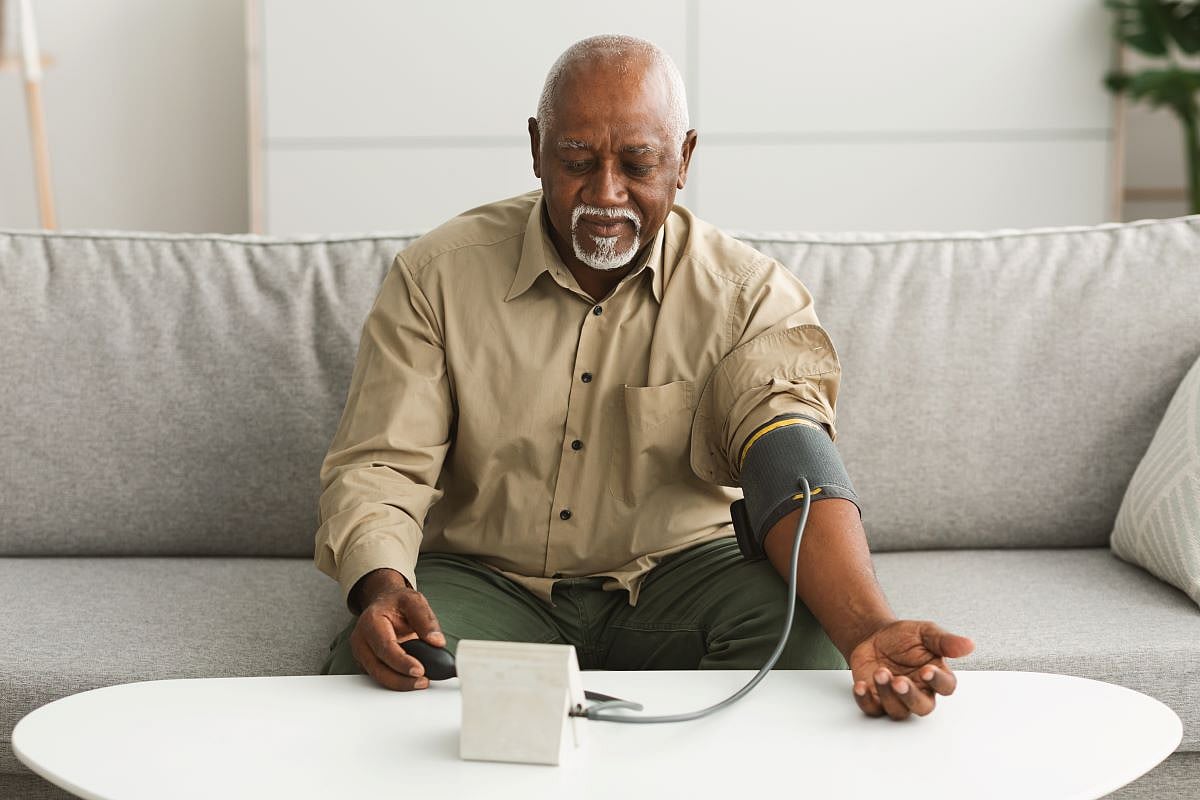Get Healthy!

- Dennis Thompson
- Posted February 21, 2025
Rewards of Tight Blood Pressure Control Outweigh Risks, Trial Finds
The health benefits of aggressive blood pressure control outweigh the potential risks for seniors, according to the latest results from a major clinical trial.
About 85% of seniors treated to a target blood pressure of 120 systolic (the top number in a blood pressure reading) had a positive net benefit from such tight control, researchers reported.
The reduced risk of heart disease and early death outweighed the negatives that can accompany such aggressive treatment, which include potential kidney damage or dangerously low blood pressure, results show.
“Almost all … participants aged 65 years or greater had a predicted net benefit that favored an systolic blood pressure target of less than 120 mm Hg over a systolic blood pressure target of less than 140 mm Hg,” concluded the research team led by senior investigator Dr. Simon Ascher, an assistant clinical professor with the University of California-Davis.
Systolic blood pressure refers to pressure within blood vessels during a heartbeat.
Elderly patients, frail seniors and those taking many different medications derived "greater absolute harms from intensive blood pressure lowering," along with greater heart disease, cognitive and death rate benefits, the study found.
These results come from the Systolic Blood Pressure Intervention Trial (SPRINT), which in 2017 led major U.S. cardiology groups to revise their definition of high blood pressure.
As a result, blood pressure of 130 systolic has been considered “high” for the past eight years, down from a target of lower than 140 systolic prior to the release of the first SPRINT results.
Normal blood pressure is considered less than 120 systolic, while anything between 120 and 130 is considered elevated but not yet high blood pressure.
For the new study, researchers conducted more in-depth analysis of more than 5,100 SPRINT participants 65 and older, comparing those assigned to aggressive treatment against those treated to a target of 140 systolic.
“These findings indicate that when accounting for an individual's estimated risks and outcome preferences, the benefits of intensive BP lowering outweigh the harms for most SPRINT-eligible, community-dwelling older adults with hypertension, especially among high-risk subgroups who are often assumed to neither tolerate nor benefit from intensive BP lowering,” researchers concluded.
The results are particularly important given that most Americans have poorly controlled blood pressure, the research team said.
“Less than half of U.S. adults aged 65 years or greater with a hypertension diagnosis have well-controlled BP, defined as BP less than 130/80 mm Hg,” the researchers wrote.
Part of the problem is that doctors have been reluctant to strictly treat high blood pressure among patients who are elderly, frail and taking a number of medications, researchers said.
“Our findings suggest that, contrary to conventional wisdom, factors such as age, frailty, or polypharmacy should not be viewed as barriers to intensive BP lowering,” the team concluded.
The new study was published Feb. 18 in the Journal of the American Geriatrics Society.
More information
The American Heart Association has more about high blood pressure.
SOURCE: American Geriatrics Society, news release, Feb. 19, 2025
